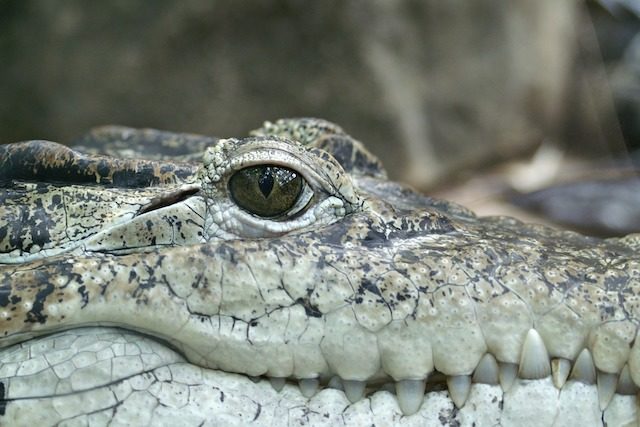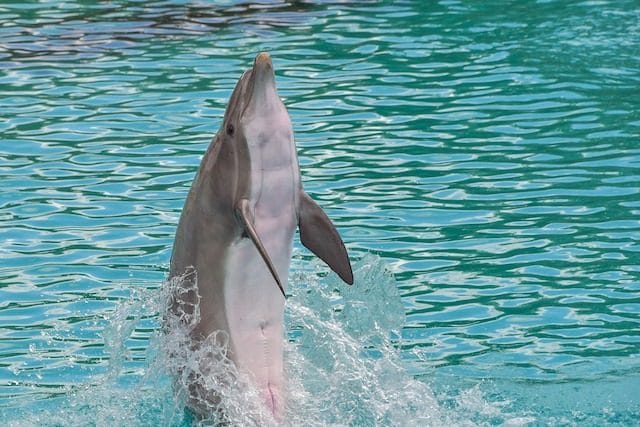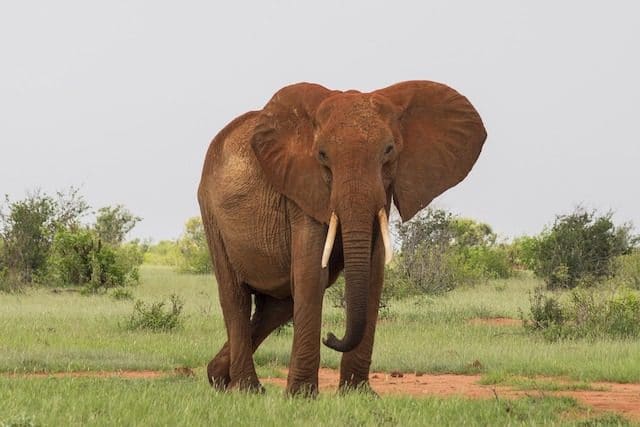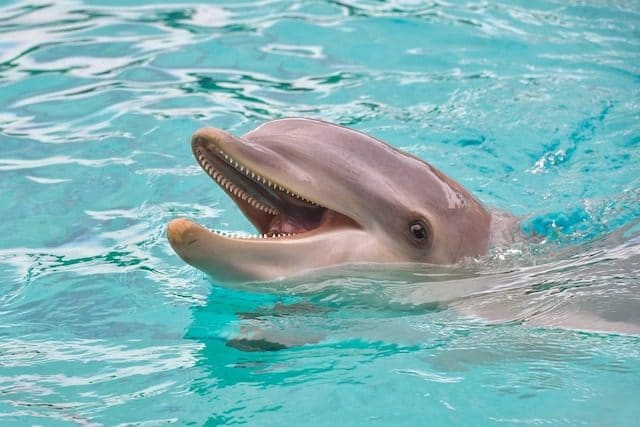There’s no doubt humans are the most clever animals on the planet Earth. We developed tool making 2.6 million years ago and in the present we have Swiss army knives and cheese graters, so it’s all worked out well. While animals have yet to develop iPhones and vape pens, that doesn’t mean they haven’t developed their own ingenious solutions to various problems. Here are some of the most impressive examples.
10. Crocodiles Use Twigs To Bait Birds

Thanks to Steve Irwin, most of us have an appreciation for what a crocodile can and can’t do. These prehistoric throwbacks have a bite strength of 3,700 pounds per square inch, which is about the most powerful you’ll find anywhere on the planet, and can lunge at prey at a speed of about 12 meters per second, which means if you don’t see it before it attacks you probably never will.
Research shows that, in addition to their impressive list of biological advantages, crocodiles are more clever than you might think. When brute force and speed fail, they can use trickery. Crocodiles have been witnessed using sticks as bait to attract nest-building birds.
The technique basically involves using themselves as platters during the birds’ nesting season. Alligators and crocodiles will rest with sticks on their snouts. Birds that get close to try to gather the materials are snapped up and eaten.
9. Teamwork Makes the Dream Work for Badgers and Coyotes

In school and business, we’re often pushed into working with others under the assumption that teamwork makes us all better. Research doesn’t necessarily bear that out, of course, and some people hate teamwork for good reason. But there are definitely times when teamwork does get things accomplished and there’s even unlikely evidence of it in the animal kingdom. For instance, when badgers and coyotes team up together to hunt.
Their partnership was witnessed by Native Americans even before Europeans came to North America, so there’s a long history of it working. Both animals hunt similar prey, but in different ways. If a badger wants a gopher, he’ll dig down into a burrow for it while a coyote will chase it on the land. This means that a gopher can adapt its defense to either of the predators, but not to both. Above ground, it can outrun a badger. Below ground it can outwit a coyote. So when they hunt together, the gopher is out of options.
One member of the hunting team will inevitably win the prey and no, they don’t share. But hunting together optimizes their chances of both catching prey in the long term, so the arrangement is beneficial even if only one will ever eat at a time. The fact the animals can recognize this is pretty remarkable.
8. Dolphins Can Hydroplane to Hunt

We all know dolphins are intelligent and they have displayed things like abstract thinking and empathy on many occasions. It shouldn’t come as a surprise then that they’re very crafty when it comes to problem solving on the fly. This has been witnessed and even filmed before when it comes to how they can use their intelligence to get otherwise hard to catch prey.
Dolphins have learned to hydroplane when they need to reach prey that would normally be out of reach. In shallow water, a dolphin can technically only travel so far. But their prey is much smaller so they can comfortably swim in water that can accommodate a dolphin. Except when dolphins hydroplane across the surface like living boogie boards to grab a fish that thought it was safe.
It’s not a common hunting tool for dolphins, but in a pinch, they’ll do it. Young dolphins can watch their mothers do it and then learn the skill themselves.
7. Elephant Takes Out an Electric Fence

Upwards of 30,000 elephants are killed by poachers every year, despite all the campaigns people have heard about to stem the tide of this slaughter. And while there are many efforts being put into place to prevent this killing, obviously it’s not always working. And, unfortunately, sometimes that’s due in part to how craft elephants themselves can be.
In many protected areas of Africa, low-voltage electric fences are used to keep elephants in safe, monitored areas. But no one told the elephants that and they don’t always want to stay where humans want them. So sometimes the elephants will actually disable these electric fences to get to the other side. More than once, elephants have been observed testing the current with their trunks, and then using logs or even removing the fence poles to disable the fence itself.
6. Dolphins Use Sea Sponge Armor

Because dolphins are so clever, you can bet they have more tricks up their sleeves than just hydroplaning. For instance, when they need to they can use armor to protect themselves as they hunt. Back in 1984, scientists observed dolphins tearing up pieces of sea sponges and then carrying them in their beaks, making a little glove for their faces.
The sponge is able to protect the face of the dolphin as it roots around on the seafloor to dig up prey. They won’t get cut by rocks and coral and they’ll force out fish they can eat.
Since dolphins are fairly skilled at catching fish in open water, researchers wanted to know why they’d even bother with this complex maneuver. Turns out, the fish on the bottom are often more nutritious. They also don’t have swim bladders, which a dolphin can identify with echolocation. So hunting this way makes them easier to find.
As an added twist, this is a fairly unique skill even among dolphins. It’s only been observed in a small population, and mothers teach the skill to their daughters but not their sons.
5. Honey Badgers Build and Use Tools to Escape Enclosures
The honey badger meme showed up on the internet in 2011 and you could make a strong case that many people didn’t even know what a honey badger was before that. Since then, these furious little African mammals have been a part of pop culture, but they’re also causing a scene any place they’re being held in captivity. Honey badgers don’t like being enclosed and they are incredibly industrious about getting past obstacles.
Honey badgers are some of the most adept escape artists in the animal kingdom. They will stack mud, use sticks, and climb anything placed in enclosures to help scale walls. One badger was paired with a friend once and the two teamed up to open a more complex lock together. But that isn’t the end of it.
Beyond escaping, honey badgers can also demonstrate creativity in problem solving. They’re able to think outside the box, as it were, and solve problems to reach goals like accessing food in hard to reach places.
4. Crows Create Hooks for Hunting

Birds have long been considered intelligent animals if for no other reason than many of them excel at mimicry. You only need to hear one bird say hello or curse you out to realize they have some skills most other animals lack. There was a budgie named Puck that has a world record for having a 1,728 word vocabulary, which may be more than some people. And that’s the least of the skills birds possess.
Crows, which can also talk, have also demonstrated a highly effective tool building skill that helps them in hunting and problem solving. Crows have been put to the test with fairly complex problems and tasked with opening boxes to get food. The number of steps a crow can go through to reach a goal is remarkable and has been filmed to show off how easily a crow can pull it off. In one test, a crow needed to solve eight separate puzzles in a row to achieve his goal, which he achieved in just minutes.
Even without man-made puzzles designed with a specific solution, crows have demonstrated their own problem solving by way of tool building. It turns out crows understand the fundamentals of something like a hook or a rake. They’re able to create their own and use them to dig up insects that they couldn’t otherwise reach with their beaks. The hooks even have barbed ends like a fishing hook to ensure the bugs they hunt don’t slip back off.
3. Sea Otters Use Stone Anvils

Otters are one of those adorable and playful animals that pop up in viral videos so often and get shared around. People seem to love them even though it’s worth noting an otter will straight up try to kill you if you cross it. But that aside, they are crafty animals in their own right and have demonstrated some clever problem solving of their own in the wild.
Sea otters were once nearly wiped from existence thanks to the fur trade. Efforts to preserve them have allowed them to make a slow comeback and along with that has come a study of the animals and their habits. A unique aspect of this is what researchers have learned because of the tools the animals used to hunt.
Otters eat mussels and to break into them they tend to do one of two things. They will either hold a rock in their paws and use it like a hammer, breaking a mussel open on their chest while they float on their backs, or they use a stationary rock.
The stationary rock works like an anvil. The otter brings the mussel down on the rock to crack it open. Research on areas where otters hunt has offered up an abundance of information about how otters live. There are rocks that bear evidence of being used as anvils for years, including piles of thousands of discarded mussel shells. The damage pattern on the shells and the observation of how otters use them even shows that otters have a paw preference, similar to how a human will be left or right handed, when it comes to accomplishing these tasks.
2. Burrowing Owls Bait Their Homes with Dung to Attract Beetles
Burrowing owls are some of the tiniest and most adorable little owls in the world. They’re smaller than pigeons and, as their name suggests, they live in little holes in the ground. Given their size, they can’t exactly hunt large prey, so they aim for smaller things. In particular, they really enjoy dung beetles.
The thing about dung beetles is they tend to be pretty predictable. For instance, if you want to catch one, you need to look for dung. It’s right in the beetle’s name. And burrowing owls understand this. They understand it so well that they’ve learned how to bring dung beetles to them instead of going out on a hunt and putting themselves at risk.
Since dung beetles like mammalian dung, burrowing owls go out and collect poop. They bring it home and bait the entrances to their burrows with it, which draws the dung beetles in and ensures that the owls don’t have to go far to find a meal.
It was hypothesized that the dung might be a tool to mask the scent of a den from predators, but experiments proved this isn’t the case. The owls are just fishing for beetles.
1. Polar Bears Hurl Boulders at Prey

Polar bears are the largest carnivore on land in the entire world. It seems like, if they started using tools, it’d just be overkill. On the other hand, what’s the fun of being the largest land carnivore and not pushing the limits? Polar bears do use tools and they use them for one thing – killing more effectively.
Polar bears weigh up to around 1,300 pounds. The biggest on record was just over 2,000 pounds. Polar bears hunt walruses and the biggest walrus ever was over 3,700 pounds. On the low end of the scale, they weigh about 1,700 pounds. They also have incredibly strong skulls. Plus, they have giant tusks. So, in general, a walrus is bigger than a polar bear. This has led polar bears to hunt walruses by hurling rocks at them.
The Inuit have known the bears do this for generations, but science is slow to listen to people sometimes. The bears climb cliffs and hurl rocks or chunks of ice with remarkable accuracy, busting the skulls of their prey.